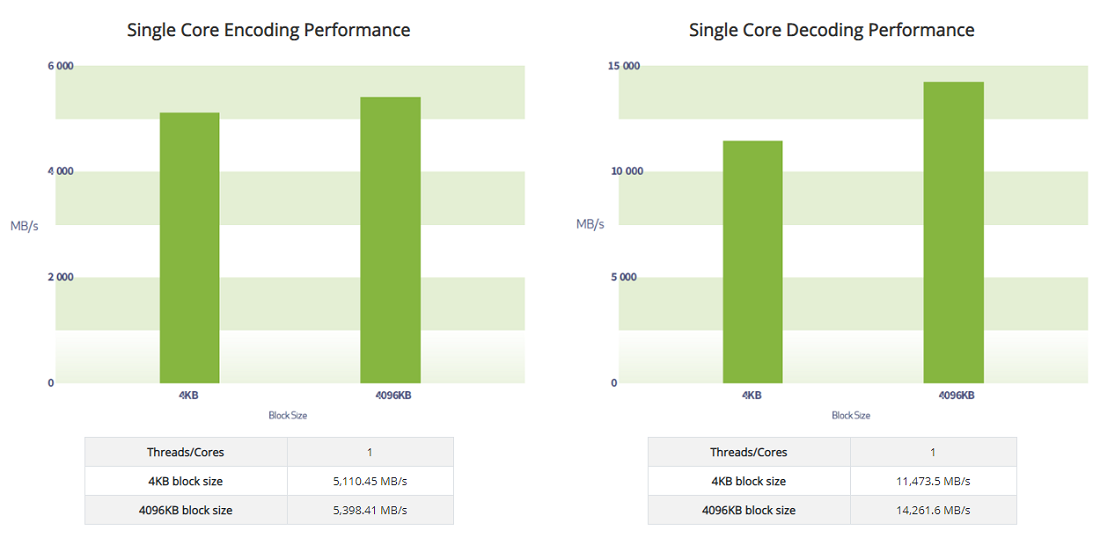Advanced
Single & Multi Core Performance of an Erasure Coding Workload on AMD EPYC
Examining what erasure coding throughput can be achieved with an AMD EPYC 7601 processor teamed up with the MemoScale Erasure Coding Library. The tests have been performed with a GIGABYTE MZ31-AR0 server motherboard.
INTRODUCTION
TRENDS - INCREASING DATA GROWTH AND FASTER STORAGE DEVICES
THE ROLE OF ERASURE CODING IN DATA STORAGE

AMD EPYC
GIGABYTE SERVER MOTHERBOARDS
MEMOSCALE ERASURE CODING LIBRARY
SYSTEM CONFIGURATION

HOW WE TESTED
ENCODING AND DECODING DATA WITH ERASURE CODING
SINGLE CORE ENCODING & DECODING PERFORMANCE

MULTI CORE ENCODING & DECODING PERFORMANCE

CONCLUSION
Get the inside scoop on the latest tech trends, subscribe today!
Get Updates
Get the inside scoop on the latest tech trends, subscribe today!
Get Updates















